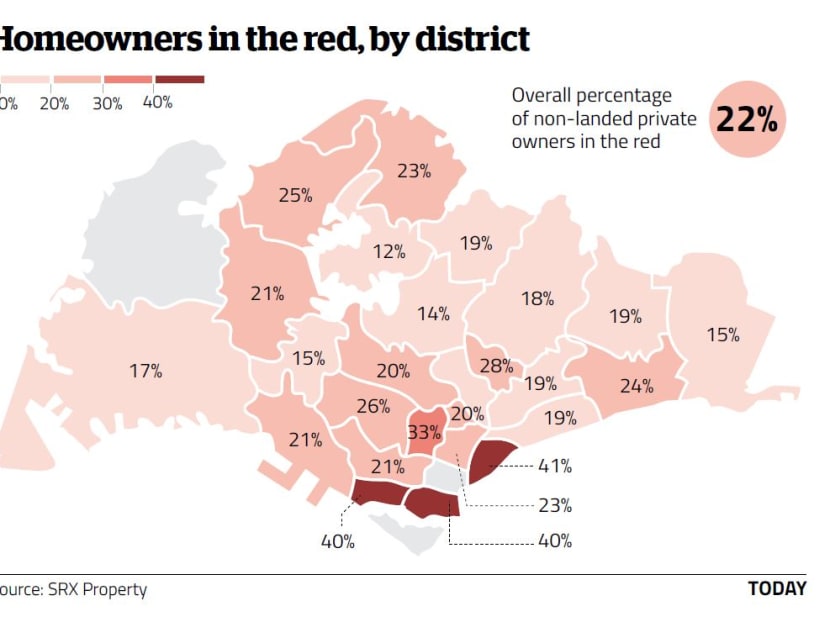One in five condo owners sitting on paper losses
About 22 per cent of private condominium owners are currently in the red, meaning that they are suffering from paper losses on their homes, according to estimates based on SRX Property’s computer-generated X-Value.

About 22 per cent of private condominium owners are currently in the red, meaning that they are suffering from paper losses on their homes, according to estimates based on SRX Property’s computer-generated X-Value.
Singaporean homes were transacted within plus or minus 3.5 per cent of their X-Value on average last year and in the first half of this year. This makes the automated valuation algorithm a reliable indicator of a property’s market value. X-Value, available free at SRX.com.sg, helps homeowners understand when it might be possible to realise capital gains on their homes or if they would suffer losses if they sell their properties.
The calculation is simple enough. Subtract your purchase price from your home’s X-Value and, voila, you get your indicative unrealised gain or loss, excluding other costs related to the transaction.
For example, if you purchased your home at S$500,000 and the X-Value is S$650,000, you have an unrealized or paper gain of S$150,000.
But it is only on paper and will not be realized until you sell the home. If you home has unique features that warrant a premium to X-Value, you may even get a better realized gain when you manage to secure the deal at your price. On the flip side, if you sell your home below its purchase price, you will suffer a capital loss. Homeowners can track their unrealized capital gains or losses at SRX.com.sg/property-tracker and receive a free SMS updating them on the value of their homes.
Among the private condo homeowners in the red, those in District 1’s Marina Bay are sitting on some of the biggest paper losses, with over 40 per cent in the area suffering from a loss if they sell their homes today at market value, as estimated by X-Value.
The good news is that these losses are unrealized, so it isn’t inevitable that these homeowners will lose money when they actually sell the properties in the future. If they can wait it out, market values might catch up to their purchase prices, allowing them to break even or sell at a profit.
But just because the losses are unrealized doesn’t mean that we should dismiss concerns about the relatively high percentages of homeowners suffering as reflected in the 28 Shades of Red graphic. When homeowners are in the red, they feel less wealthy and this may diminish their confidence to invest and spend. This can also lead to stress, risk aversion and a number of other negative psychological effects.
If you as a homeowner are in the red, I recommend that you consult a financial advisor, who can help you review and restructure your finances so that you can manage household spending and debt and give yourself more breathing room to wait for the market to rebound.
ABOUT THE AUTHOR: Sam Baker is Co-Founder and Chief Executive Officer of SRX Property. For more details on the data and calculations used in this article, visit SRX.com.sg/research.





